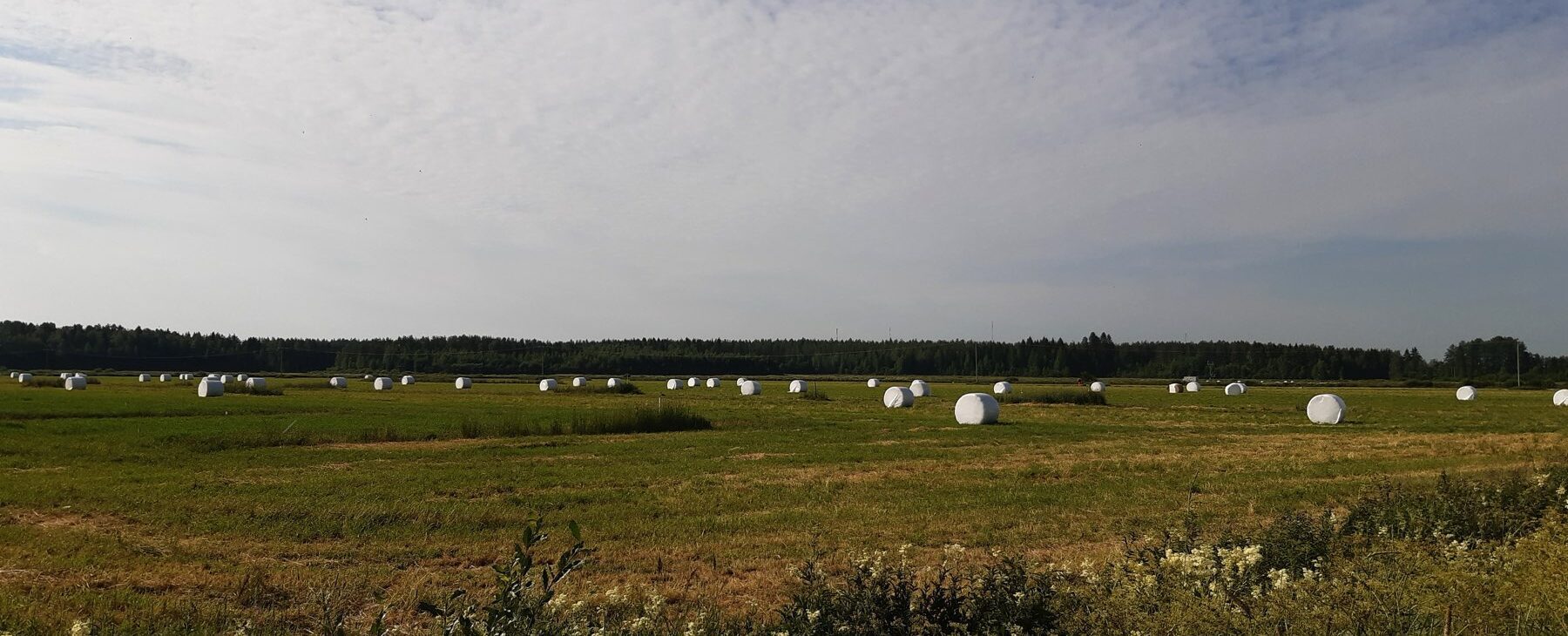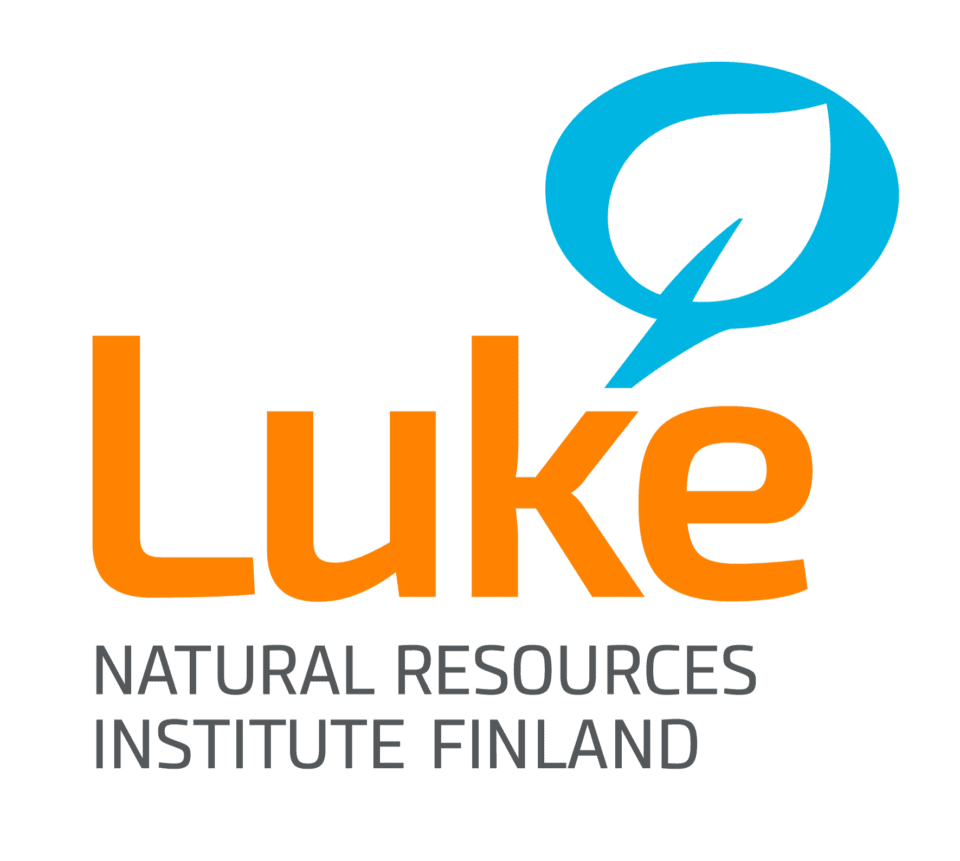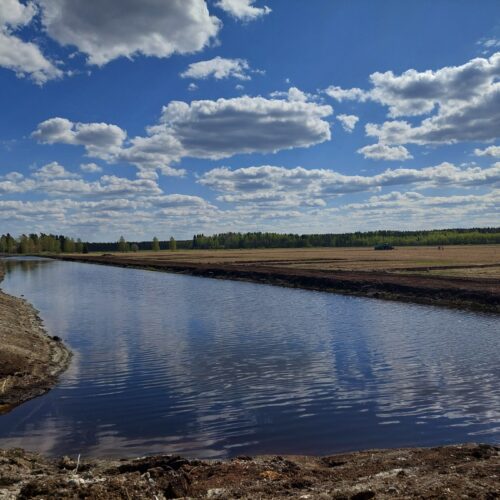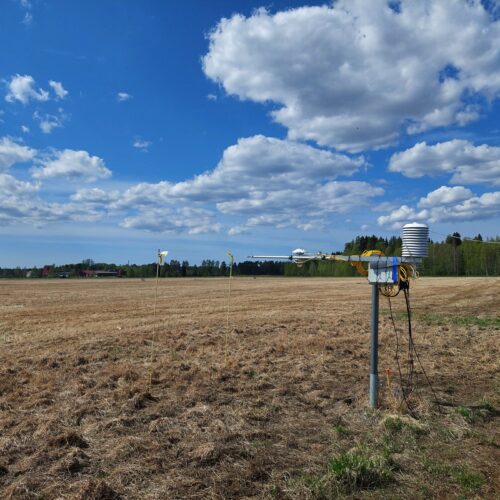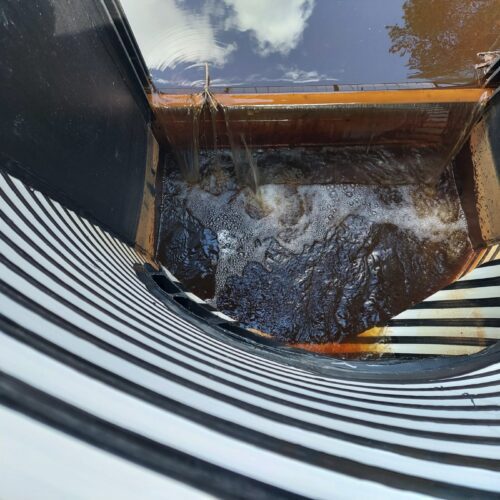At the NorPeat facility, each of the eight study plots is on conventional grass rotation with 3-5 years grass and 1-2 years cereals. The forage is used at the experimental station’s research barn, where beef cattle research is conducted. The facility is located on acid sulphate soils and the peat depth ranges from 15 cm to 75 cm forming a gradient from mull soil (organic matter content 20-40 %) to peat soil (organic matter content >40 %). The impact of peat depth on ecosystem functions and agricultural productivity can be studied in different plots.
The most effective way to mitigate high greenhouse gas emissions on cultivated peatland is to increase the water table level in the soil profile. Controlled sub-surface drainage systems can increase the water table level only moderately without additional water. Therefore, a 0.7 ha water storage reservoir collects rain- and runoff water that can be directed into the field through controlled subsurface drainage pipes. Water management through sub-irrigation is being further developed by integrating various technical elements such as remote control and automation in collaboration with the University of Oulu.
At the NorPeat facility, the greenhouse gas emissions and the leaching to adjacent watercourses are studied with various techniques year-round. The facility is equipped with a wide network of modern sensors and data loggers to continuously monitor essential environmental parameters, such as water table level, soil moisture and temperature, improving our greenhouse gas and water-related datasets. The impacts on water bodies are studied at the catchment scale, focusing on open ditches, drainage systems, and rainwater, with the goal of understanding the waterborne load from the fields in relation to other land uses. In addition to conducting greenhouse gas measurements (carbon dioxide, nitrous oxide and methane) with different chamber techniques, portable gas analyzers, and the snow gradient method, the Finnish Meteorological Institute (FMI) operates an Eddy covariance tower centrally located on the NorPeat field. Next to the facility is also a national weather station that provides real-time weather data.
The Ruukki infrastructure governed by the Natural Resources Institute Finland (Luke) is located in the municipality of Siikajoki, 60 km south from the city of Oulu, the largest city in Northern Finland. Luke’s Ruukki infrastructure also includes over 50 ha of other fields, with varying soil types, offering additional support for field experiments besides the NorPeat facility.
